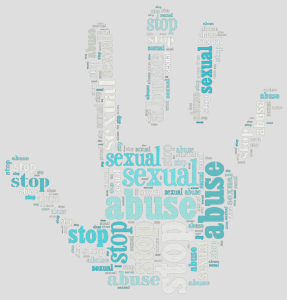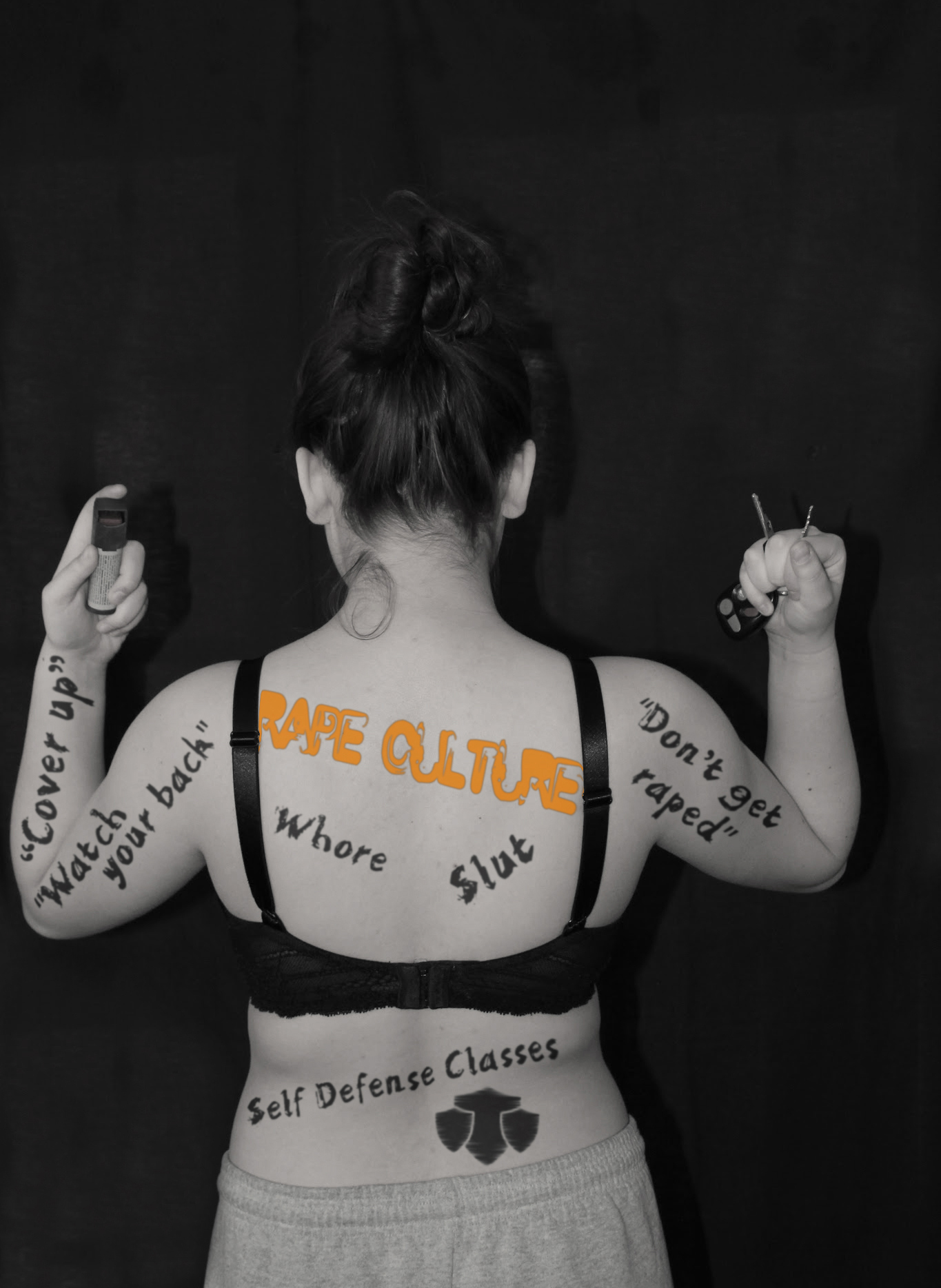It is a disease affecting the nation. Everyday, thousands of rape cases go unnoticed and hundreds of rapists go unprosecuted. With an American citizen sexually assaulted every 107 seconds, Rape Culture has stepped into the light as a serious problem.
By Claire Ward & Gigi Saadeldin
“No one is asking to be violated. There should be a ‘yes’ before anything happens.”
In Transforming a Rape Culture by Emilie Buchwald, Rape Culture is defined as “a society where violence is seen as sexy and sexuality as violent. In Rape Culture, [people] perceive a continuum of threatened violence that ranges from sexual remarks to sexual touching to rape itself. A Rape Culture condones physical and emotional terrorism [as the norm].”
Sexual assault can be classified as any sexual activity performed on a person who has not given consent. Giving consent means saying the word “yes.” Consent can not be given if the victim is unconscious, severely under the influence of drugs or alcohol, or in a forced situation. Sexual assault ranges from an inappropriate touch to unconsented intercourse. Merriam-Webster defines rape as: “[forcing] (someone) to have sex with you by using violence or the threat of violence” with the archaic definition of “to seize and take away by force.” It is sexual intercourse between two or more people when one person does not agree or want it to happen.
Rape is a term used loosely in today’s world. We hear it all the time: “That test just raped me,” “We raped them in our game,” “Calm down, you’re acting like you’re being raped.” The term itself has become a joke in society. Due to never being taken seriously, people who are raped are afraid to speak up, thinking their experience is simply a joke. A word that once made people shudder at the sound and thought of it is now used as a way to describe an “utter defeat to someone in any form of competition” according to Urban Dictionary.

“Boys will be boys.”
When addressing Rape Culture, the topic of stereotypes and myths always come into the conversation. Such as the common excuse: she was asking for it because she was wearing revealing clothing. This is an excuse, usually used by the perpetrator, to take away blame and imply the clothing a victim is wearing means they want to be violated sexually. In reality, many sexual assault cases happen to people who are wearing what can be considered as everyday clothing. A study on violence from the Federal Commission of Crime reports that only 4.4 percent of reported rape cases involve provocative behavior from the victim.
Next is the myth that by drinking alcohol a person is asking to get raped. People drink, it’s a fact of life. No person asks to be assaulted by having a drink with their friends. Another myth: only women get raped. According to RAINN, the nation’s largest anti-sexual abuse organization, 20 million American citizens – men and women – have been victims of sexual assault. In a crowd of 100 people, three percent of that will be male victims. Yet, in that same crowd, 16.6 percent of women will be victims of rape or attempted rape. So, while both men and women can be sexually assaulted, more victims tend to be female.
Not only do stereotypes come up, but also excuses that justify assault or take blame away from the assailant. The most common: “Boys will be boys.” This phrase implies that it is not a man’s fault he committed a serious violation to a woman (or another person), and it is programmed into his mind that he is entitled to have sex with whomever he wants.
This excuse tells women they should protect themselves from the uncontrollable tendencies of men. Constantly, the phrase “don’t get raped” is thrown at women. Females are told to carry pepper spray, be wary in parking garages, and take self-defense classes.
Yet, sometimes these precautions don’t help. Date rape is a large factor of Rape Culture. Just a simple slip of Rohypnol, Ketamine, or GHB (also known as “club drugs” or “roofies”) can cause a victim to lose control of their body and senses, leaving them completely vulnerable and unable to protect themselves from attackers.
Rape Culture isn’t just date rape or an excuse used by an assailant. Rape Culture is a world where humans have to protect themselves while walking down the street. It is a place where sexually active women are slut-shamed and sexually active men are seen as victors. It’s a society where women are seen as underlings in a male-driven world.
“Does this actually happen?”
Imagine sitting at a party with your friends, talking to someone who seems nice, not expecting to do anything but have a fun night. Then you wake up the next morning in a strange room with little memory of what happened the night before. That feeling turns to terror when you see used condoms on the floor near you.
For one Dexter student, this shocking story is reality.
“All I remember was they put something in my drink. I wasn’t necessarily screaming, but I was saying stop.” This student asked for their identity to remain anonymous, they will be referred to as Jane. She has agreed to share the story of her first assault with The Squall.
Jane was in the middle of her freshman year when her first of three rapes occurred. She was drugged during her first two assaults. Jane still has very little memory of both nights, and has only heard bits and pieces of what she could not remember through her friends, whom had overheard her rapists talking about it afterwards.
Jane, being the designated driver, hadn’t planned on drinking either of the nights. When her friend decided she wanted to sleep over Jane agreed on a drink offered to her by a friendly guy she had met.
He was 19, and she was only 15, making her underage. When Jane woke up in the morning with a sore feeling, and saw used condoms on the floor next to her, she realized she had been raped. She immediately told her family, and went to the doctor to complete a rape kit: a forensic examination used to collect DNA and other evidence left behind by the attacker. When results came back positive for rape, Jane and her family decided to prosecute her rapist. The case went to court and the assailant was found guilty, but shortly posted bail.
Jane’s rapist was in jail for one week.
Once she heard of his release, she was scared to do regular things such as leave her house.
“I’m really aware of my surroundings now, like when I’m with people I don’t really know,” Jane said. “I’m not clingy [when with friends]. I just keep an eye out and don’t like leaving them alone for too long. I just don’t want anyone going through what I went through.”
When Jane was asked about her opinion on Rape Culture and the romanticizing of rape in the media she replied, “I just really hate it. When people sit there and say, ‘She was asking for it because of what she was wearing’ it’s just a big no. Like, I was wearing yoga pants and Ugg boots [the first time it happened]. The second time I was wearing all sweats. No one is asking to be violated. There should be a‘Yes’ before anything happens.” Jane says all three incidents haven’t changed her outlook on daily life, but have helped her realize just how realistic the danger of being raped is.
“The worst thing you can call a girl is a girl. The worst thing you can call a guy is a girl. Being a woman is the ultimate rejection, the ultimate dismissal of strength and power, the absolute insult.” – Stefanie Kaufman, a rape victim.
“It’s a double standard.”
Slut-shaming is the act of making or attempting to make a person feel guilty or less than they’re worth because of: their sexual behaviors, their sexual desires that differ from traditional gender expectations, the way they dress, the way they talk, the way they walk, how they carry themselves, who they are dating, their sexual orientation, the amount of partners they have had, and sometimes even because of their friends.
“I hate slut shaming; it’s a double standard,” junior Ashley Bota said. “It’s fine for guys to have sex, but apparently girls should always stay classy.”
When a person is slut-shamed, they are being told that they can be sexual, but not too sexual. If you don’t have a lot of sex, you are perceived as “prude.” If you do have a lot of sex, you are deemed a “slutty.” Often times, slut-shaming is used to enforce victim blaming for rape and other forms of sexual assault. A rapist might claim that the crime was caused by the woman wearing revealing clothing or previously acting in a forward, sexual manner, before having unconsented sex.
“Wanna play the rape game? No? That’s the spirit!”
In the U.S., a person is sexually assaulted every two minutes, according to RAINN. Yet, some people joke about someone vandalizing another person’s body, about a topic that has given people a reason for self harm, about a topic that has caused severe depression, a topic that has made people turn away from their friends and family, and a topic that has been the cause of thousands of suicides every year.
“I don’t think that people understand just how seriously telling a rape joke could hurt somebody,” senior Leah Rescorla said.
Rape jokes are not funny. Constantly, there’s a new story on the news about a person angered by a rape joke. The Huffington Post recently posted multiple articles on new TV episodes or movies with the positive use of negative jokes.
“I think that these jokes are extremely inappropriate and insensitive to someone who has actually been in a rape-type situation,” senior Rosie Kaloustian said. Rape is not a joke.
Rape is that bad, and Rape Culture is affecting everyone even if you don’t realize it.

